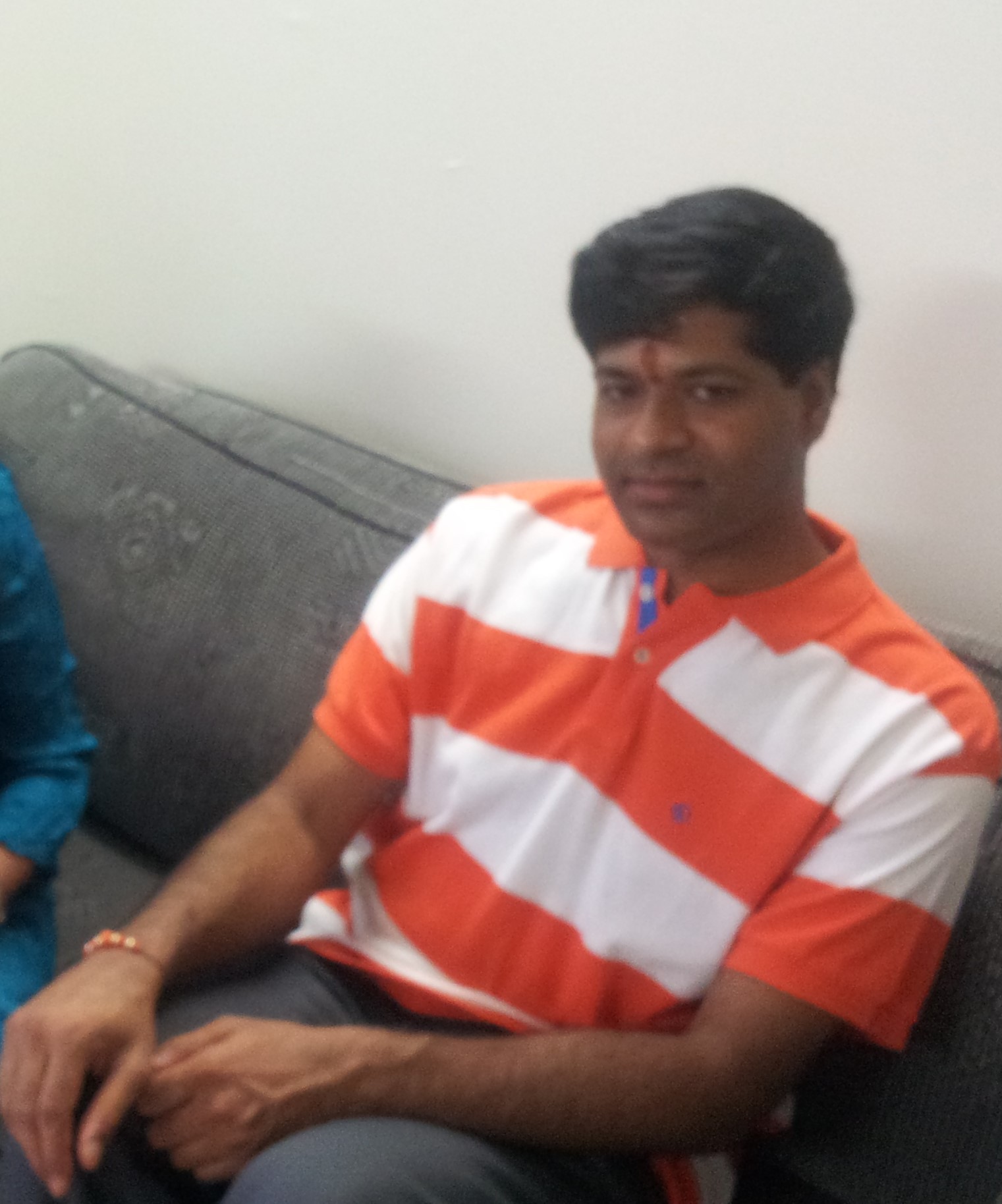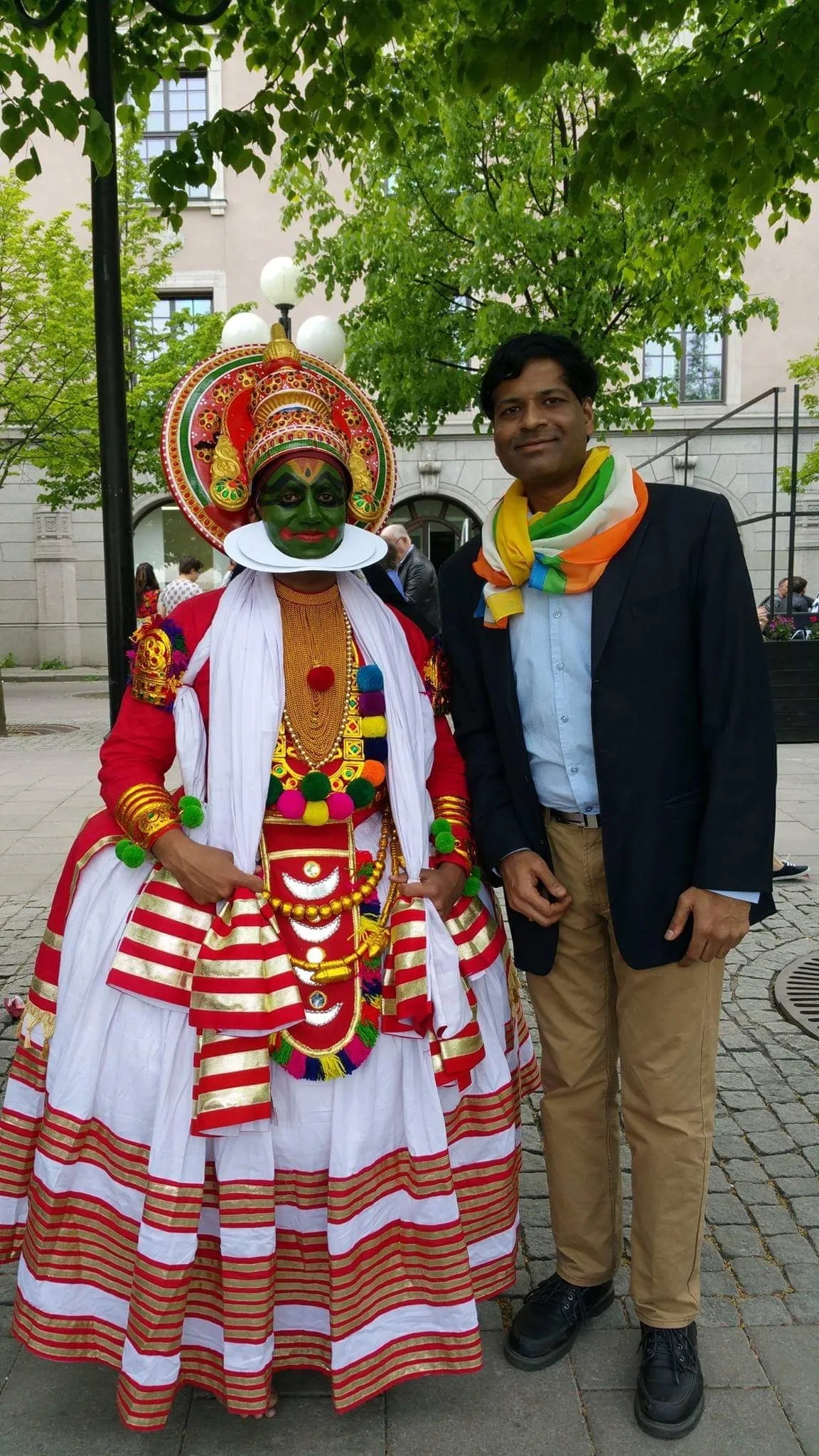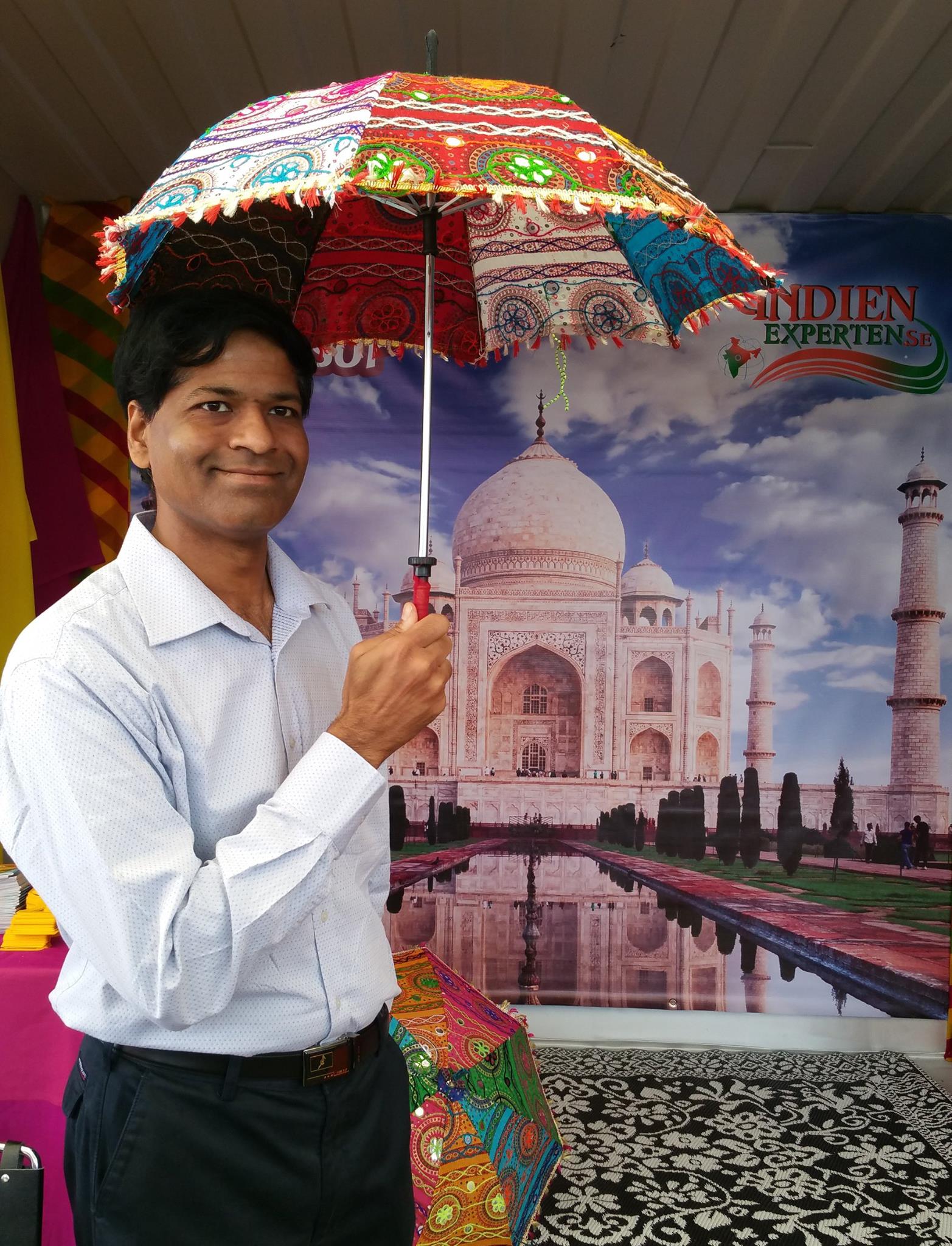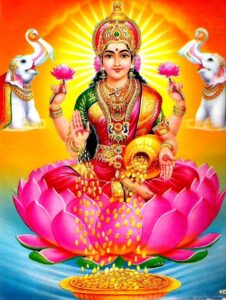
India is a land of festivals & festivities with many festivals that have seasonal, Harvest & agriculture, cultural & religious significance. Featured photo is Kathakali Dances that are commonly performed during an Indian festival called Onam with dancers enacting famous mythological legends. Raksha Bandhan is another Indian festival. Raksha Bandhan – also Rakshabandhan is a popular, traditionally Hindu, annual rite, or ceremony, which is central to a festival of the same name celebrated in South Asia and in other parts of the world. The festival signifies and celebrates the bond between brothers and sisters. On this day – sisters of all ages tie a talisman, or amulet, called the rakhi, around the wrists of their brothers, symbolically protecting them, receiving a gift in return, and traditionally investing the brothers with a share of the responsibility of their potential care



WHAT IS RAKSHA BANDHAN ?
- Raksha Bandhan, also Rakshabandhan is a popular, traditionally Hindu, annual rite, or ceremony, which is central to a festival of the same name celebrated in South Asia, and in other parts of the world
- Raksha Bandhan also called Rakhi Purnima or simply Rakhi in many parts of India and Nepal, is a Hindu religious festival
- The festival signifies and celebrates the bond between brothers and sisters
- It is celebrated on Shraavana Poornima (Full Moon)
- In simple words, Raksha bandhan means “Bond of Protection
- On this day – sisters of all ages tie a talisman, or amulet, called the rakhi, around the wrists of their brothers, symbolically protecting them, receiving a gift in return, and traditionally investing the brothers with a share of the responsibility of their potential care
- Raksha Bandhan is observed on the last day of the Hindu lunar calendar month of Shraavana, which typically falls in August
- The expression “Raksha Bandhan,” Sanskrit, literally, “the bond of protection, obligation, or care,” is now principally applied to this ritual
- Until the mid-20th-century, the expression was more commonly applied to a similar ritual, also held on the same day, with precedence in ancient Hindu texts, in which a domestic priest ties amulets, charms, or threads on the wrists of his patrons, or changes their sacred thread, and receives gifts of money; in some places, this is still the case
- In contrast, the sister-brother festival, with origins in folk culture, had names which varied with location, with some rendered as Saluno, Silono and Rakri
- A ritual associated with Saluno included the sisters placing shoots of barley behind the ears of their brothers
- Of special significance to married women, Raksha Bandhan is rooted in the practice of territorial or village exogamy, in which a bride marries out of her natal village or town, and her parents, by custom, do not visit her in her married home
- In rural north India, where village exogamy is strongly prevalent, large numbers of married Hindu women travel back to their parents’ homes every year for the ceremony
- Their brothers, who typically live with the parents or nearby, sometimes travel to their sisters’ married home to escort them back
- Many younger married women arrive a few weeks earlier at their natal homes and stay until the ceremony
- The brothers serve as lifelong intermediaries between their sisters’ married and parental homes as well as potential stewards of their security
- In urban India, where families are increasingly nuclear, the festival has become more symbolic, but continues to be highly popular
- The rituals associated with this festival have spread beyond their traditional regions and have been transformed through technology and migration, the movies, social interaction and promotion
- Among women and men who are not blood relatives, there is also a transformed tradition of voluntary kin relations, achieved through the tying of rakhi amulets, which have cut across caste and class lines and Caste / religious divisions
- In some communities or contexts, other figures, such as a matriarch, or a person in authority, can be included in the ceremony in ritual acknowledgement of their benefaction
- he Hindi word, rākhī derives from the Sanskrit rakṣikā, a join: rakṣā protection, amulet
WHEN IS RAKSHA BANDHAN OBSERVED ?
RAKSHA BANDHAN IS OBSERVED & CELEBRATED ON SHRAAVANA POORNIMA (FULL MOON) AS PER THE HINDU CALENDAR (PANCHANG)
DOES RAKSHA BANDHAN FALL ON THE SAME DATE EVERY YEAR ?
NO
BECAUSE IT FOLLOWS HINDU LUNISOLAR CALENDAR – IT FALLS ON A DIFFERENT DATE EVERY YEAR – ADVANCING BY 10-11 DAYS EVERY YEAR AND COURSE CORRECTING AFTER NEARLY EVERY 3 YEARS
WHAT IS THE SIGNIFICANCE OF SHRAAVANA MONTH IN INDIAN / HINDU CALENDAR ?
&
WHY DO MANY FESTIVALS FALL IN THIS MONTH ?
THE MONTH OF SHRAVANA IS VERY IMPORTANT FOR THE ENTIRE SUB-CONTINENT OF INDIA AS IT IS CONNECTED TO THE ARRIVAL OF SOUTH WEST MONSOONS THAT HAS BIG IMPACT ON HARVEST & AGRICULTURE & THEREFORE FOOD, LIFE & LIVING
- Śrāvaṇa (Sanskrit: श्रावण) is the fifth month of the Hindu calendar
- In India’s national civil calendar – Śrāvaṇa is the fourth month of the Hindu year, beginning in late July from the first day of the full moon and ending in the third week of August, the day of the next full moon
- In lunar religious calendars, Śrāvaṇa begins on the new moon and is the fourth month of the year
- This is also the 2nd month of Varsha (rainy) season.
- The month of Shravana is very important for the entire sub-continent of India as it is connected to the arrival of the South-West monsoons
- For many Hindus, the month of Shraavana is a month of fasting
- Many Hindus will fast every Monday to the Lord Shiva and/or every Tuesday to the Goddess Parvati
- Fasting on Tuesdays of this month is known locally as “Mangala Gauri Vrat”
WHAT IS THE INDIAN HINDU CALENDAR (PANCHANG) ?
- A Hindu calendar is sometimes referred to as Panchangam (पञ्चाङ्ग), which is known also known as Panjika in Eastern India
- A panchānga (Sanskrit: पञ्चाङ्गम्) is a Hindu calendar and almanac, which follows traditional units of Hindu timekeeping, and presents important dates and their calculations in a tabulated form
- They forecast celestial phenomena such as solar eclipses, forecasting weather (rain, dry spells) as well as more mundane occurrences.
- The Hindu calendar or Panchang (Sanskrit: पञ्चाङ्ग) or Panjika, refers to a set of various lunisolar calendars that are traditionally used in the Indian subcontinent and South-east Asia, with further regional variations for social and Hindu religious purposes
- They adopt a similar underlying concept for timekeeping based on sidereal year for solar cycle and adjustment of lunar cycles in every three years
- However also differ in their relative emphasis to moon cycle or the sun cycle and the names of months and when they consider the New Year to start
WHAT IS THE DIFFERENCE BETWEEN HINDU CALENDAR & GREGORIAN CALENDAR ?
IS IT SOLAR OR LUNAR OR LUNI – SOLAR ?
WHAT IS THE CHALLENGE AMONG SOLAR & LUNAR / LUNI-SOLAR SYSTEMS ?
THE CHALLENGE BETWEEN SOLAR & LUNAR SYSTEMS IS THAT OF ACCOUNTING FOR THE MISMATCH BETWEEN THE NEARLY 354 LUNAR DAYS IN TWELVE MONTHS – VERUS NEARLY 365 SOLAR DAYS IN AN YEAR
So unlike the Gregorian calendar which adds additional days to the lunar month to adjust for the mismatch between twelve lunar cycles (354 lunar days) and nearly 365 solar days – the Hindu calendar maintains the integrity of the lunar month, but inserts an extra full month by complex rules, once every 32–33 months to ensure that the festivals and crop-related rituals fall in the appropriate season
- In Hindi Calendar – They tracked the solar year by observing the entrance and departure of Surya (sun, at sunrise and sunset) in the constellation formed by stars in the sky, which they divided into 12 intervals of 30 degrees each
- Like other ancient human cultures, Hindus innovated a number of systems of which intercalary months became most used, that is adding another month every 32.5 months on average
- As their calendar keeping and astronomical observations became more sophisticated, the Hindu calendar became more sophisticated with complex rules and greater accuracy
- These ancient scholars attempted to calculate their time to the accuracy of a truti (29.63 microseconds)
- In their pursuit of accurate tracking of relative movements of celestial bodies for their calendar, they had computed the mean diameter of the earth, which was very close to the actual 12742 km (7918 mi)
HOW ARE FESTIVALS & OTHER EVENT DATES CALCULATED OR FIXED AS PER HINDU CALENDAR ?
- MONTHS : Two traditions have been followed in the Indian subcontinent with respect to lunar months :
- Amanta tradition – which ends the lunar month on no moon day, while
- Purnimanta tradition – which ends it on full moon day
- PAKSHA : A month contains two fortnights called pakṣa (पक्ष, literally “side”)
- One fortnight is the bright, waxing half where the moon size grows and it ends in the full moon – This is called “Gaura Paksha” or Shukla Paksha
- The other half is the darkening, waning fortnight which ends in the new moon – This is called “Vadhya Paksha” or Krishna Paksha
- The Hindu festivals typically are either on or the day after the full moon night or the darkest night (amavasya, अमावास्या), except for some associated with Krishna, Durga or Rama
- The lunar months of the hot summer and the busy major cropping-related part of the monsoon season typically do not schedule major festivals
- A combination of the Paksha system, and the two traditions of Amanta and Purnimanta systems, has led to alternate ways of dating any festival or event in the historic Hindu, Buddhist or Jain literature, and contemporary regional literature or festival calendars.
- For example, the Hindu festival of colours called Holi falls on the first day (full moon) of Chaitra lunar month’s dark fortnight in the Purnimanta system
- While the same exact day for Holi is expressed in Amanta system as the Purnima (full moon) lunar day of Phalguna
- Both time measuring and dating systems are equivalent ways of meaning the same thing, they continue to be in use in different regions, though the Purnimanta system is now typically assumed as implied in modern Indology literature if not otherwise specified
CORRECTIONS, CORRELATION & ALIGNMENTS BETWEEN LUNAR & SOLAR MONTHS IN THE HINDU CALENDAR(S)
IS IT SOLAR OR LUNAR OR LUNI – SOLAR ?
HINDU CALENDAR – SOLAR MONTHS
- There are 12 months in the Vedic lunar calendar (Sanskrit: मासा)
- If the transits of the Sun through various constellations (Rāśi) are used, then we get solar months, which do not shift with reference to the Gregorian calendar.
- In practice, solar months are mostly referred as Rāśi (not months)
- The names of the solar months are also used in the Darian calendar for the planet Mars (The Darian calendar is a proposed system of timekeeping designed to serve the needs of any possible future human settlers on the planet Mars)
HINDU CALENDAR – LUNAR MONTHS
- The names of the Hindu months vary by region
- Those Hindu calendars which are based on lunar cycle are generally phonetic variants of each other, while the solar cycle are generally variants of each other too
- The Tamil lunar month names are forward shifted by a month compared to Vikrami month names, in part because Tamil calendar integrates greater emphasis for the solar cycle in a manner similar to the neighboring Kerala region and it follows the Amanta system for lunar months
- This is in contrast to Vikrami calendar which keeps the Purnimanta system and emphasizes the lunar cycle
SOLAR LUNAR CALENDAR ALIGNMENT CALCULATIONS
THE CHALLENGE
- Twelve Hindu mas (māsa, lunar month) are equal to approximately 354 days, while the length of a sidereal (solar) year is about 365 days
- A sidereal year (From Latin sidus “asterism, star”; also sidereal orbital period) is the time taken by the Earth to orbit the Sun once with respect to the fixed stars
- Hence, it is also the time taken for the Sun to return to the same position with respect to the fixed stars after apparently travelling once around the ecliptic
- It equals 365.256 363 004 Ephemeris days for the J2000.0 epoch
- The sidereal year differs from the solar year – “the period of time required for the ecliptic longitude of the Sun to increase 360 degrees” due to the precession of the equinoxes
- The sidereal year is 20 min 24.5 s longer than the mean tropical year at J2000.0 (365.242 190 402 ephemeris days)
- This creates a difference of about eleven days, which is offset every (29.53/10.63) = 2.71 years, or approximately every 32.5 months
THE SOLUTION
- Purushottam Maas or Adhik Maas is an extra month that is inserted to keep the lunar and solar calendars aligned
- The twelve months are subdivided into six lunar seasons timed with the agriculture cycles, blooming of natural flowers, fall of leaves, and weather
- To account for the mismatch between lunar and solar calendar, the Hindu scholars adopted intercalary months, where a particular month just repeated
- The choice of this month was not random, but timed to sync back the two calendars to the cycle of agriculture and nature
- The repetition of a month created the problem of scheduling festivals, weddings and other social events without repetition and confusion
- This was resolved by declaring one month as Shudha (pure, clean, regular, proper, also called Deva month) and the other Mala or Adhika (extra, unclean and inauspicious, also called Asura masa
- The Hindu mathematicians who calculated the best way to adjust the two years, over long periods of a yuga (era, tables calculating 1000 of years), they determined that the best means to intercalate the months is to time the intercalary months on a 19-year cycle
- This intercalation is generally adopted in the 3rd, 5th, 8th, 11th, 14th, 16th and 19th year of this cycle
- Further, the complex rules rule out the repetition of Mārgasirsa (also called Agrahayana), Pausha and Maagha lunar months
- Rare corrections – The Hindu calendar makes further rare adjustments, over a cycle of centuries, where a certain month is considered kshaya month (dropped)
HINDU CALENDAR
- The Hindu calendars have been in use in the Indian subcontinent since Vedic times, and remain in use by the Hindus all over the world, particularly to set Hindu festival dates
- The Buddhist calendar and the traditional lunisolar calendars of Cambodia, Laos, Myanmar, Sri Lanka and Thailand are also based on an older version of the Hindu calendar
- Similarly, the ancient Jain traditions have followed the same lunisolar system as the Hindu calendar for festivals, texts and inscriptions
- However, the Buddhist and Jain timekeeping systems have attempted to use the Buddha and the Mahavira’s lifetimes as their reference points
- The Hindu calendar is also important to the practice of Hindu astrology and zodiac system as well as observing special appearance days of the Lord and fasting days such as Ekadasi
- Samvat refers to era of the several Hindu calendar systems in Nepal and India, in a manner that the consecutive years 1 BC and AD 1 mark the Christian era and the BC/AD system
- There are several samvat found in historic Buddhist, Hindu and Jaina texts and epigraphy, of which three are most significant : Vikrama era, Old Shaka era and Shaka era of 78 AD
- The Vikrami calendar is named after king Vikramaditya and starts in 57 BCE. Vikram Samvat (Bikram Sambat): A northern India almanac which started in 57 BCE, and is also called the Vikrama Era
- Saka Era of 78 AD, or simply Saka Era, a system that is common in epigraphic evidence from southern India
- Indian national calendar (modern): combined many Hindu calendars into one official standardized one, but old ones remain in use
MAKAR SANKRANTHI – THE EXCEPTION IN HINDU CALENDAR
WHAT IS THE MAIN DIFFERENCE OF MAKAR SANKRANTI & OTHER INDIAN FESTIVALS ?
SANKRANTI IS THE ONLY INDIAN FESTIVAL CELEBRATED ON A FIXED DAY OF THE GREGORIAN CALENDAR (14 / 15 JANUARY)
- Makar Sankranti is one of the few ancient Indian and Nepali festivals that has been observed according to solar cycles –
- Most other Indian festivals are set by the lunar cycle of the lunisolar (चंद्र – सौर) Hindu calendar
- Being a festival that celebrates the solar cycle, it almost always falls on the same Gregorian date every year (January 14) – except in some years when the date shifts by a day for that year (January 15)
WHY DOES MAKAR SANKRANTI ALMOST ALWAYS FALLS ON JANUARY 14 / 15 OF GREGORIAN CALENDAR UNLIKE OTHER INDIAN FESTIVALS THAT VARY WIDELY IN DATES EVERY YEAR ?
- Makara Sankranti is set by the solar cycle of the Hindu lunisolar calendar, and is observed on a day which usually falls on 14 January of the Gregorian calendar, but sometimes on 15 January
- The movement of the sun from one zodiac sign into another is called Sankranti and as the Sun moves into the Capricorn zodiacal sign known as Makara, this occasion is named as Makara Sankranti
- Sankranti signifies the arrival of longer days
- Makara Sankranti falls in the Hindu calendar solar month of Makara, and the lunar month of Magha (the festival is also called Magha Sankranti or Magha festival in parts of India)
- Sankranti marks the end of the month with winter solstice for India and Nepal and the longest night of the year, a month that is called Pausha in the lunar calendar and Dhanu in the solar calendar in the Vikrami system
- The festival celebrates the first month with consistently longer days
- Sun starts its annual swing northwards
- According to various Indian calendars, the Sun’s movement changes and the days from this day onwards become lengthier and warmer and so the Sun-God is worshiped on this day as a great benefactor
- Sun starts moving into the Northern hemisphere after completing six months in the Southern hemisphere
- According to Hindu religious texts, on the day of Uttarayani the sun enters the zodiac sign of Makara (Capricorn), i.e., from this day onwards the sun becomes ‘Uttarayan’ or it starts moving to the north
- It is said that from this day, which signals a change of season, the migratory birds start returning to the hills
ASTRONOMICALLY – HOW IS THE DATE OF SANKRANTI CALCULATED ?
WHY DOES MAKAR SANKRANTI ALMOST ALWAYS FALLS ON JANUARY 14 / 15 OF GREGORIAN CALENDAR UNLIKE OTHER INDIAN FESTIVALS THAT VARY WIDELY IN DATES EVERY YEAR ?
There are two different systems to calculate the Makara Sankranti date :
- nirayana (without adjusting for precession of equinoxes, tropical) –
- The January 14 date is based on the nirayana system
- sayana (with adjustment, sidereal)
- While the sayana system typically computes to about December 23, per most Siddhanta texts for Hindu calendars
- As per the solar calendar, after one year, the Sun comes to the same location 20 minutes late every year, which means the Sun needs 1 day extra after every 72 years in the sky
- Because Gregorian calendar does not accommodate this difference Makar Sankranti sometimes shifts from 14 January to 15 January, and so on
- Scientifically, currently in the Northern Hemisphere, winter solstice occurs between 21 and 22 December
- Day light will begin to increase on 22 December and on this day, the Sun will begin its northward journey which marks Uttarayaan
- The date of winter solstice changes gradually due to the Axial precession of the Earth, coming earlier by approximately 1 day in every 70 years
- Hence, if the Maghe Sankranti at some point of time did mark the day after the actual date of winter solstice, a date in mid-January would correspond to around 300 CE
